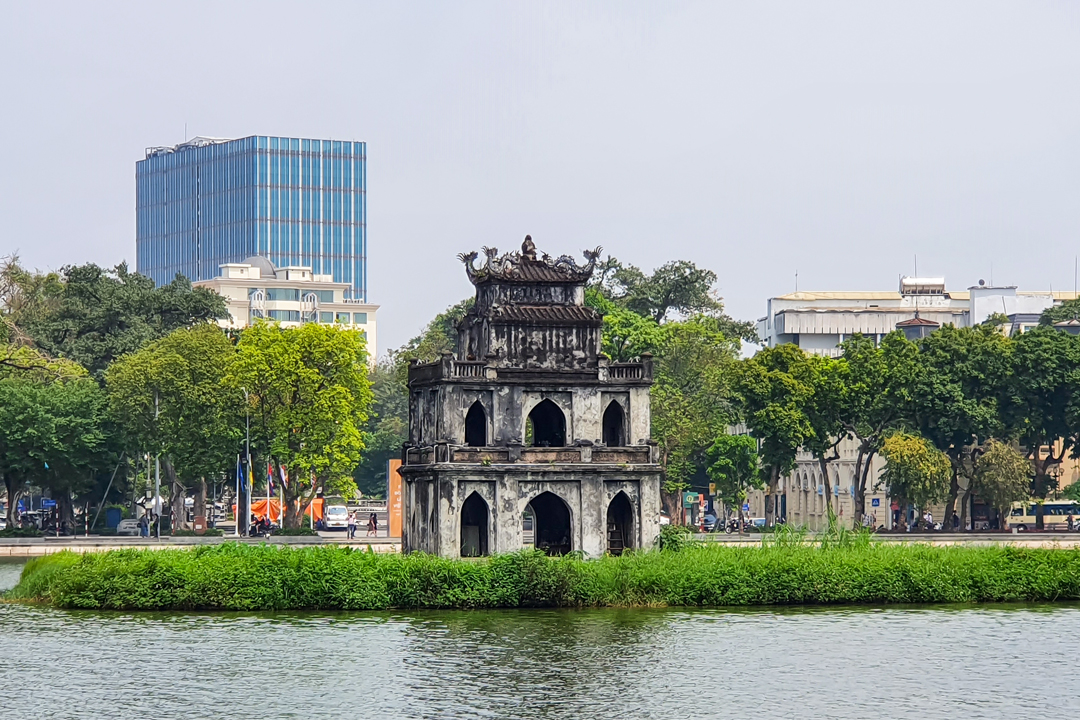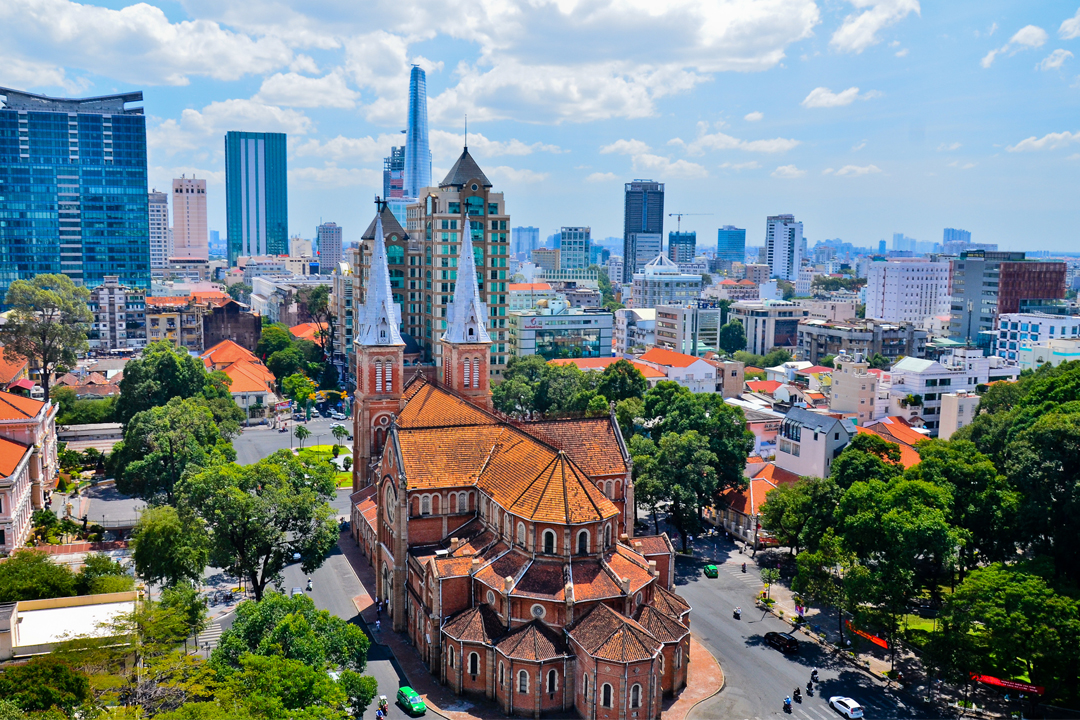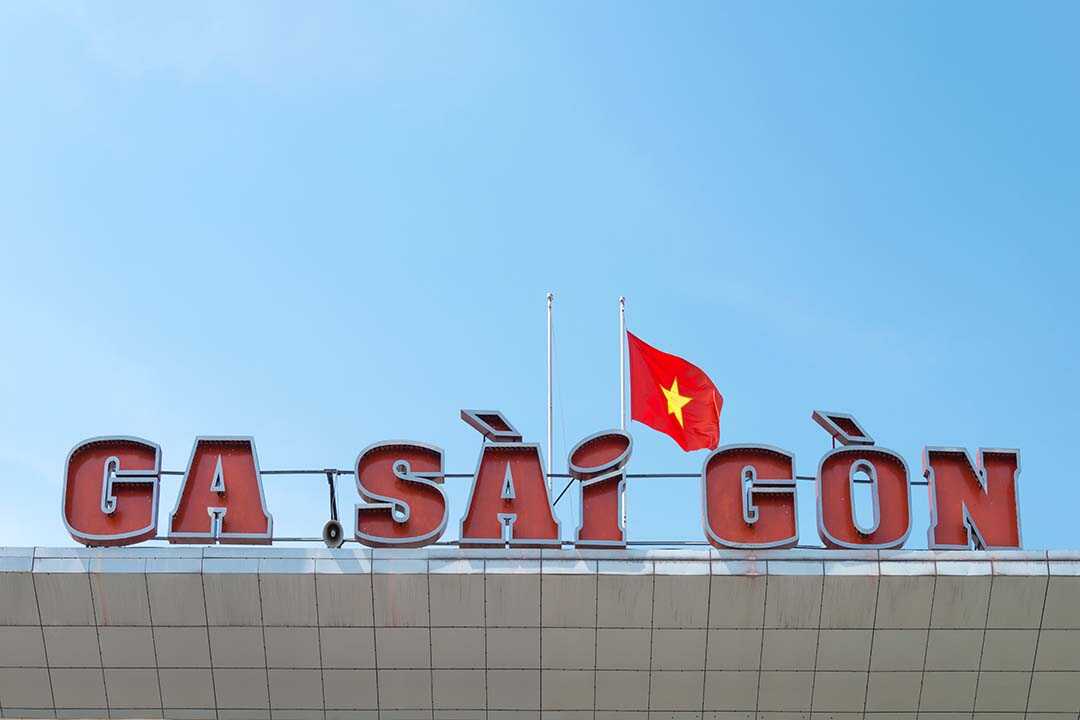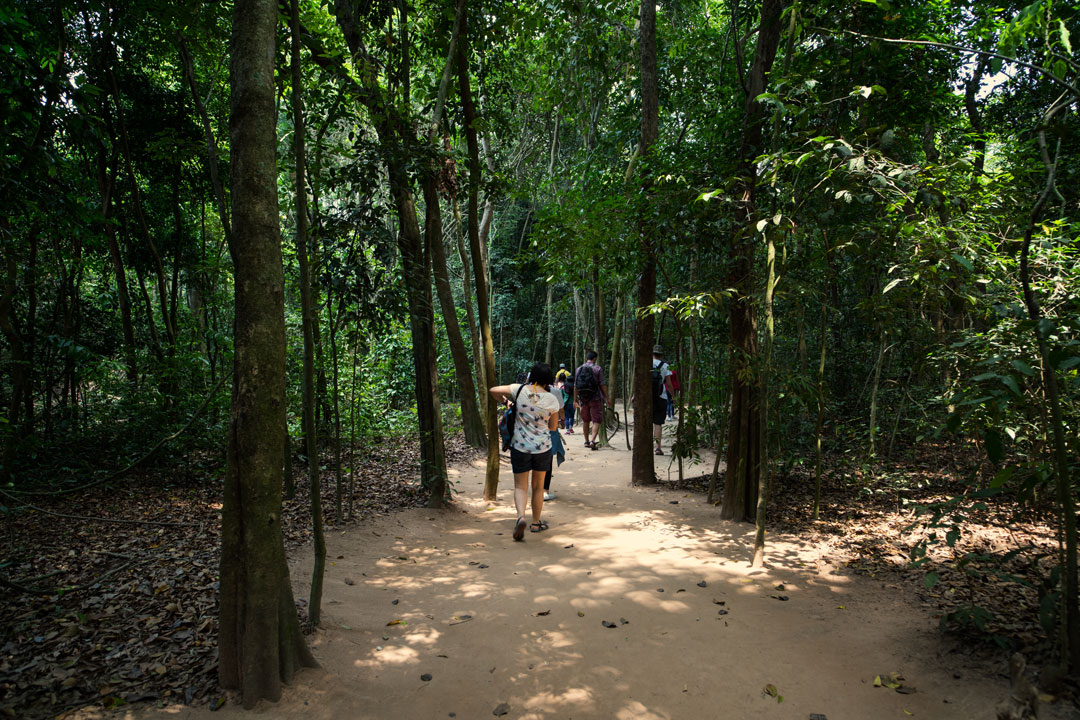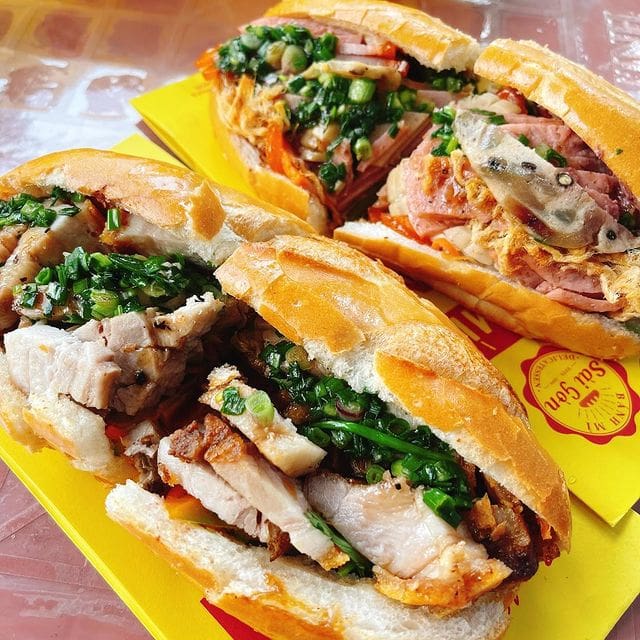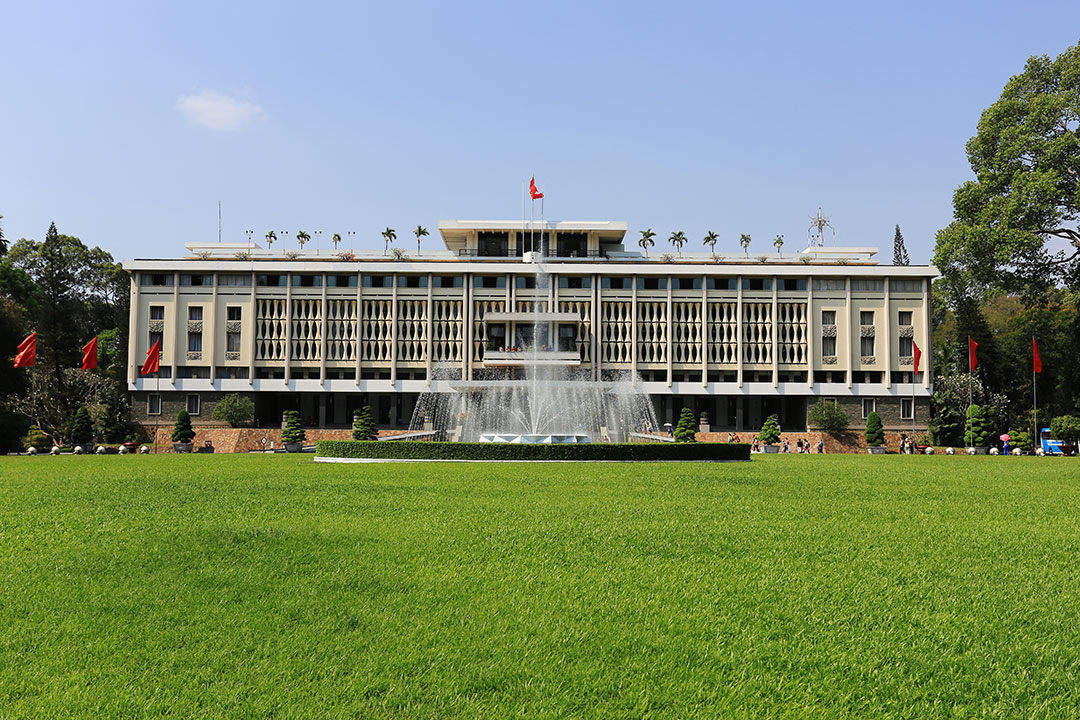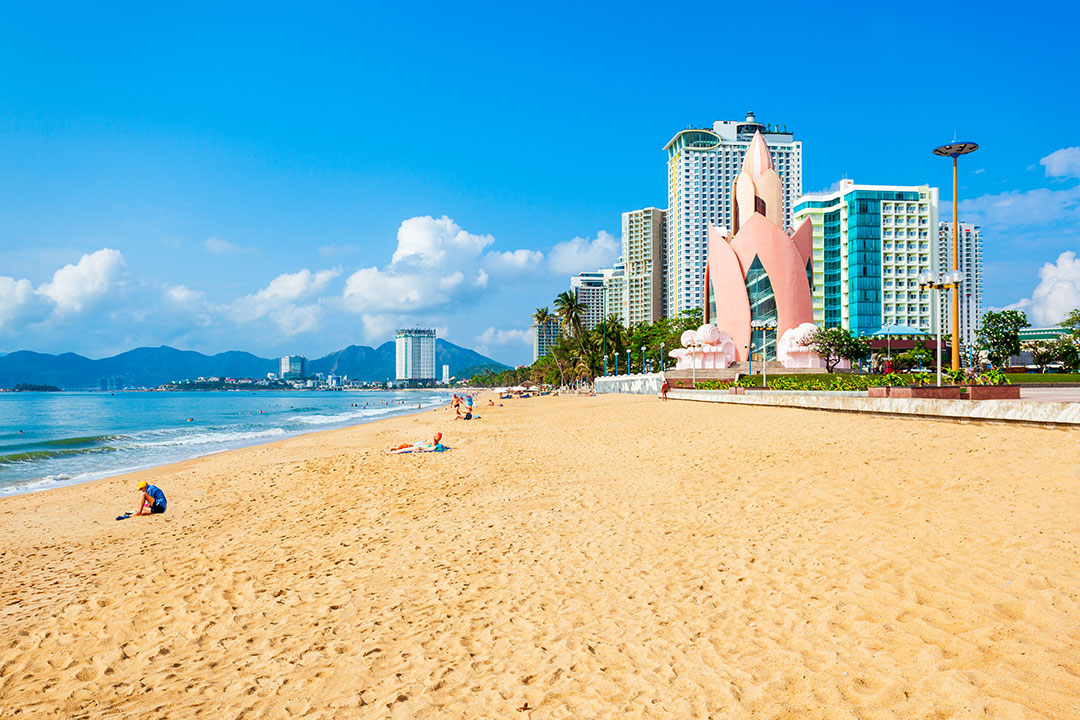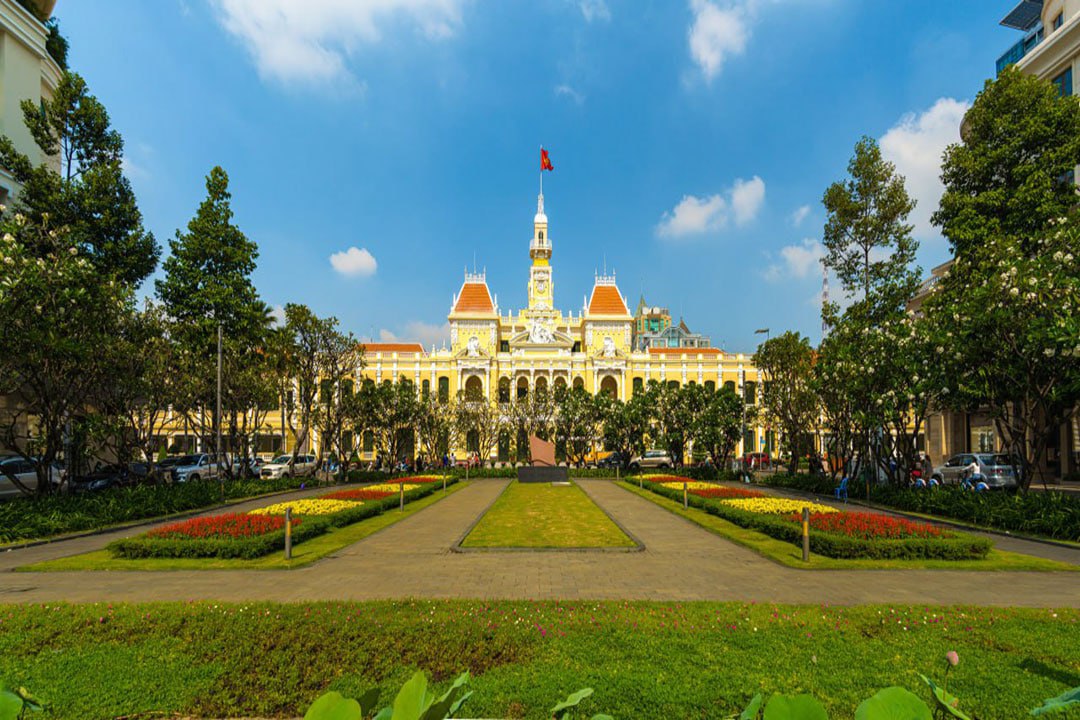Saigon Station: History, Facilities, Things To Do & Travel Guide
Saigon Station in Ho Chi Minh City is more than just a train hub, it’s a vibrant gateway where history meets the city’s modern energy. From its rich historical roots to the variety of train routes it serves, the station offers a fascinating glimpse into Vietnam’s evolving culture. This GTrip guide highlights essential amenities, practical tips for booking tickets and navigating the station, and nearby attractions to explore, ensuring your railway journey begins smoothly and leaves you with memorable experiences of the city.
An overview of Saigon Station
Address: 1 Nguyen Thong, Xuan Hoa Ward (formerly Ward 6, District 3), Ho Chi Minh City
Saigon Station is the main railway hub of Ho Chi Minh City, connecting the metropolis with provinces across southern and central Vietnam. Established during the French colonial era and modernized over time, the station blends historical charm with contemporary facilities. Serving thousands of passengers daily, it supports both passenger travel and freight transport while alleviating traffic congestion in the city. Its central location in District 3 makes it easily accessible and a convenient starting point for exploring the city or continuing a railway journey across Vietnam.
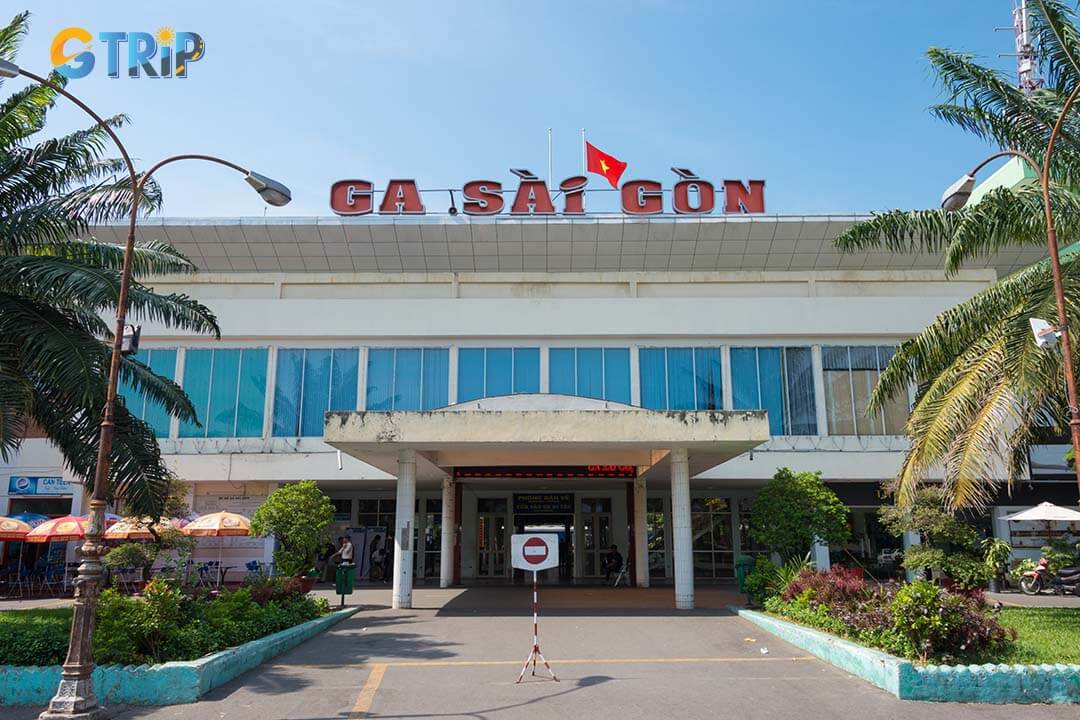
Saigon Station blending colonial heritage with modern connectivity as the southern gateway to Vietnam’s North–South Railway
History of Saigon Station
Established in 1885 during the French colonial era, Saigon Station was originally designed as a terminus connecting Saigon with My Tho, marking the start of railway travel in southern Vietnam. Its development played a key role in linking the regional economy with colonial infrastructure, enabling the movement of goods and passengers across Indochina. The first station was located at the riverside end of what is now Ham Nghi Boulevard.
With the expansion of the railway network, a larger station became necessary. Between 1911 and 1915, the second Saigon Station was built southwest of Ben Thanh Market, consolidating the Saigon-My Tho and Saigon-Nha Trang lines into a single terminus. Over time, the station underwent architectural updates, blending French colonial aesthetics with modern facilities to accommodate growing passenger demand.
In 1983, the current Saigon Station was completed at the upgraded Hoa Hung site, becoming the city’s main railway hub. Today, it anchors the southern end of Vietnam’s North-South Railway, connecting Ho Chi Minh City with provinces across southern and central Vietnam, serving thousands of passengers daily and supporting both travel and freight transport.
Facilities offered at Saigon Station
Saigon Station is a key railway hub offering a wide range of traveler-friendly facilities and services. Here’s a closer look at what visitors can expect:
Dining options and shopping outlets available
Saigon Station offers a variety of dining and shopping experiences to ensure that travelers are well-catered for during their journey. The station is equipped with multiple food stalls and eateries serving local Vietnamese cuisine, allowing travelers to enjoy a taste of authentic local flavors. For those who prefer Western food, there are fast-food chains available to offer more familiar options.
In addition to its diverse dining venues, Saigon Station features a selection of shopping outlets. These include convenience stores, where you can purchase essentials such as snacks, beverages, and travel accessories. For those interested in souvenirs, several shops offer handicrafts and locally made products, perfect for tourists wanting a piece of Vietnam to take home. Offering both dining and shopping options within the station enhances the comfort and convenience for passengers awaiting their trains.
Waiting areas and relaxation facilities
Understanding the importance of comfort and relaxation, Saigon Station provides well-maintained waiting areas equipped with ample seating. These areas are designed to be spacious, allowing travelers to relax before their departure. For added relaxation, some waiting zones offer charging stations for electronic devices, ensuring passengers can stay connected and entertained while waiting.
Families and those traveling with children will find kid-friendly spaces that provide a safe and engaging environment for younger travelers. Additionally, the station includes luggage storage facilities, enabling passengers to move freely within the station or explore the surrounding area without the burden of heavy bags. In its commitment to passenger satisfaction, Saigon Station has integrated clear signage, helping travelers navigate the station with ease and locate essential services.
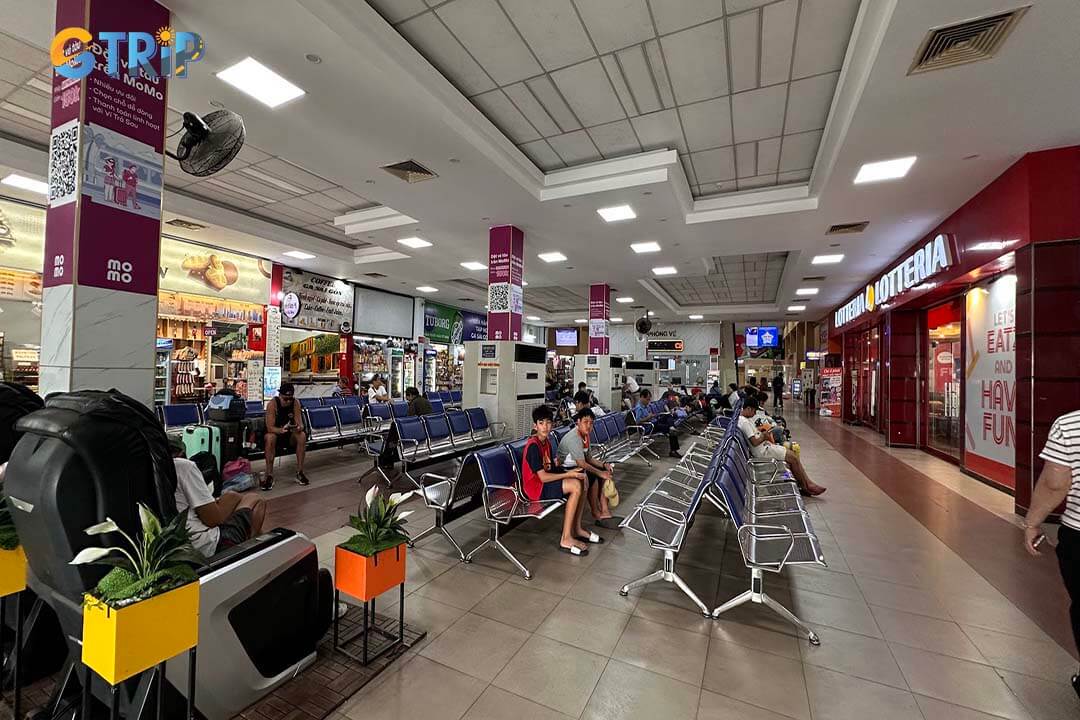
Saigon Station offers spacious waiting areas, kid-friendly zones, luggage storage, and charging stations to ensure a comfortable for passengers
Accessibility options for travelers with disabilities
Acknowledging the necessity for inclusive access, Saigon Station is equipped with facilities to assist travelers with disabilities. Ramps and elevators ensure that individuals using wheelchairs or those with mobility challenges can navigate the station smoothly. Dedicated seating areas are available for travelers requiring additional assistance, providing comfort and accessibility.
Staff members at the station are trained to offer help to individuals with special needs, ensuring a supportive environment. Saigon Station's commitment to inclusivity is further underlined by its accessible restroom facilities, which are designed to accommodate the needs of all travelers.
Saigon Station's facilities and amenities reflect its role as a modern transportation hub that respects the diverse needs of its passengers. Enjoying a meal, relaxing in waiting areas, or ensuring accessibility for all, the station is committed to providing a comfortable and efficient travel experience.
3 things to do when visiting Saigon Station
Saigon Station, a bustling transportation hub in Ho Chi Minh City, offers more than just a transit point for travelers. Here are some activities and experiences you can enjoy when visiting the station:
1. Capturing pictures of Saigon Station
Saigon Station is a photographer's delight, offering opportunities to capture vibrant moments of train travel. You can take photos of the trains arriving and departing, showcasing the bustling activity of the station. The station's architecture and the surrounding urban landscape also provide interesting backdrops for photography. For enthusiasts, capturing the vintage charm of older trains or the modern sleekness of newer models can be a rewarding experience. You should respect safety guidelines and station rules when taking photos.
2. Enjoy local street food
The area surrounding Saigon Station is rich in authentic Vietnamese street food offerings, making it a great spot for a quick, flavorful meal. Street vendors and casual eateries cluster around the station, serving everything from noodle soups to grilled meats and snacks. For a hearty breakfast or lunch, try a hot bowl of pho with beef or chicken, freshly garnished with herbs, bean sprouts, and chili. Or grab a banh mi, Vietnam’s beloved baguette sandwich filled with savory meats, pickled vegetables, and a touch of spicy sauce. Spring rolls offer a lighter, refreshing option, typically filled with shrimp, pork, vermicelli, and leafy greens. These meals are affordable, fast, and give you a real taste of local cuisine - perfect for travelers who want to eat like a local while staying close to their train schedule. Many vendors also serve strong iced coffee, ideal for recharging after a long journey.

The area around Saigon Station is a vibrant hub for authentic Vietnamese street food flavorful meals like pho, banh mi, and spring rolls, perfect for travelers on the go
3. Visit local cafes with a view of passing trains
If you’re a fan of watching trains go by while enjoying a cup of coffee, several cafes near Saigon Station offer just that experience. Around the station area, you’ll find small local coffee shops where you can catch glimpses of trains passing in the background. However, for a more open and unobstructed view, we recommend heading a bit farther. The distance from the station to the coffee shop is about 2 kilometres from the station, where elevated or trackside cafes provide a much better vantage point.
One spot we visited is a cafe called "Tren Tang Thuong" (translated as "On the Upper Floor"), which has become a favorite among young locals. Located on a rooftop, the cafe offers a clear view of the railway tracks, letting you sip your drink while watching the trains glide by in the distance. It’s a peaceful, nostalgic experience, perfect for those who enjoy quiet moments and a touch of urban romance. You can easily find this cafe by searching “Tren Tang Thuong” on Google Maps and following the directions.
These activities provide a mix of cultural exploration and local experiences, visiting Saigon Station more than just a transit stop. It's an integral part of your travel adventure in Vietnam.
Ticket booking at Saigon Station
Navigating the process of booking train tickets at Saigon Station is integral to planning your journey conveniently and efficiently. As a major transportation hub in Ho Chi Minh City, understanding the ticketing system here saves time and enhances your travel experience.
Online ticket booking platforms
Embracing digital solutions, Vietnam Railways offers several online platforms for booking train tickets, providing convenience and flexibility. These platforms allow travelers to:
- Compare prices and schedules: Users can effortlessly compare various train routes and schedules. This is particularly beneficial when planning long-distance travels, as different trains offer varied levels of comfort and pricing.
- Secure payment options: Most online platforms integrate secure payment gateways, allowing the use of cards and other forms of digital payment, thus ensuring a safe transaction environment.
- 24/7 accessibility: Passengers can book tickets at any time, which is advantageous for those planning last-minute travels or needing to adjust their itineraries on the go.
Notable platforms include the Vietnam Railways official website and apps like EasyBook, Vexere, renowned for their user-friendly interfaces, reliable customer service. Ticket prices vary significantly based on the class of service and route. You can also call the hotline 1900 1520 to buy the ticket. For example, a soft berth ticket from Ho Chi Minh City to Hanoi can cost between 1,200,000 to 1,500,000 VND (approximately $46 to $58), while a hard seat ticket for the same route might range from 500,000 to 700,000 VND (approximately $19 to $27).
Buying tickets at the station
For those preferring a more traditional approach, purchasing tickets directly at Saigon Railway Station remains a viable option. Here are some key considerations for on-site ticket purchases:
- Early arrival: Due to the station's popularity, it's advisable to arrive well in advance, especially during peak travel seasons like the Tet holiday, to avoid long queues and guarantee seat availability.
- In-person assistance: Travelers can benefit from the assistance of ticketing staff, who can provide instant guidance on train routes, seat selection, and any travel advisories.
- Payment flexibility: On-site transactions can be made using cash or a card, with Vietnamese Dong being the preferred currency. It's crucial to verify the transaction method beforehand to avoid inconvenience.
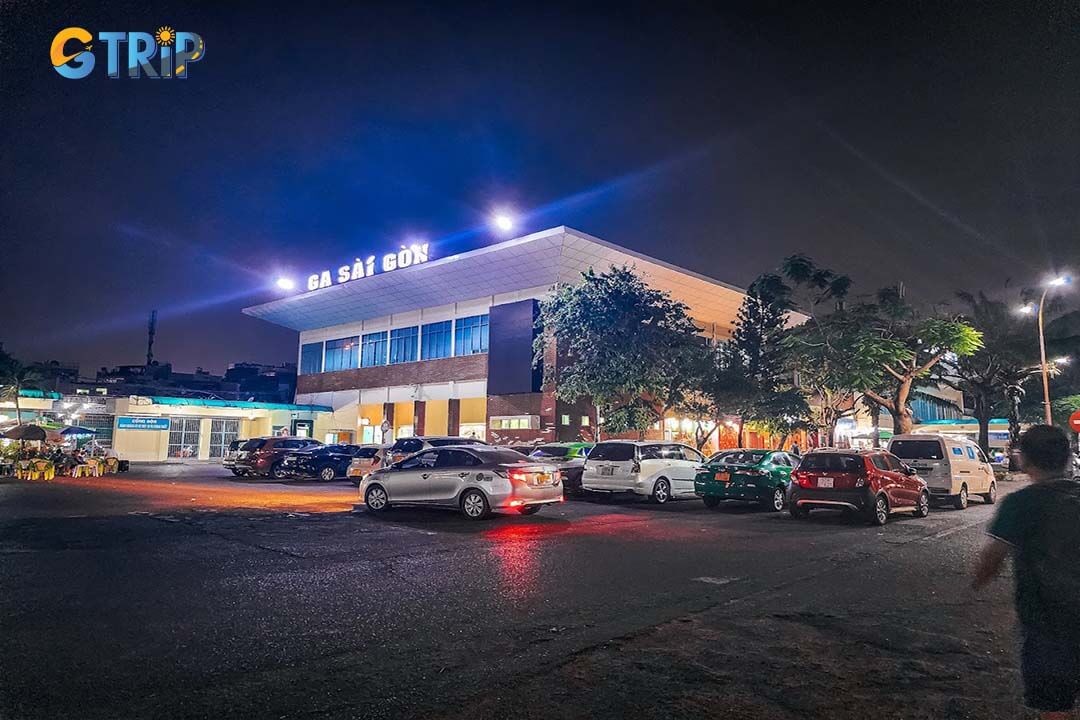
Purchasing tickets directly at Saigon Railway Station is a convenient option, with early arrival, in-person assistance, and flexible payment methods
Understanding the multifaceted ticketing options at Saigon Station is a vital aspect of ensuring a seamless and efficient travel experience. You can book online, in person, or through promotions, each option suits different needs, offering flexibility for effective travel planning.
Train routes operating from Saigon Station
Saigon Station is a pivotal hub in Vietnam's railway network, serving as the southern terminus of the North-South Railway, also known as the Reunification Express. This railway connects Ho Chi Minh City with Hanoi and other major cities across Vietnam.
Major routes and destinations
- Ho Chi Minh City to Hanoi:
- This is the primary route, covering approximately 1,726 kilometers. Trains like SE1, SE3, SE5, and SE7 operate on this route, with journey times ranging from 32 to 37 hours depending on the train type.
- Key stops include Nha Trang, Da Nang, and Hue, offering scenic views and cultural experiences along the way.
- Ho Chi Minh City to Nha Trang:
- This route is popular for tourists heading to the coastal city of Nha Trang. The journey takes about 8-9 hours, offering stunning coastal views.
- Trains such as the SE1 and SE3 stop at Nha Trang.
- Ho Chi Minh City to Da Nang:
- Da Nang is a significant stop on the North-South Railway, known for its proximity to Hoi An and the Marble Mountains. The train ride from Saigon to Da Nang lasts around 17-18 hours.
- Trains like SE1 and SE3 serve this route.
- Ho Chi Minh City to Hue:
- As the former imperial capital, Hue is a cultural touchstone in Vietnam. Trains from Saigon to Hue take about 19-20 hours.
- SE1 and SE3 trains are among those that stop at Hue.
Train types and classes
Trains operating from Saigon Station offer various classes, including:
- Hard seats: Economical option with less comfort.
- Soft seats: More comfortable than hard seats, suitable for shorter journeys.
- Hard berths: Basic sleeping compartments with six berths per cabin.
- Soft berths: More luxurious sleeping compartments with four berths per cabin, offering better comfort and privacy.
Overall, Saigon Station provides a comprehensive network of train services that connect travelers to various parts of Vietnam. It’s offering a mix of scenic journeys and cultural experiences.
How to get to Saigon Station?
Saigon Station, located at 1 Nguyen Thong Street, Ward 9, District 3, is the primary hub for long-distance trains connecting Ho Chi Minh City with the rest of Vietnam. This station is operates daily to accommodate the schedules of early morning and late-night trains. Reaching this station is straightforward thanks to a variety of public and private transportation options.
By public bus
Ho Chi Minh City has a comprehensive public bus system that is both budget-friendly and increasingly efficient. Several bus routes have stops near or directly at Saigon Station, making them an excellent option for travelers looking to save money. For instance, Route 07 connects Go Vap to Cho Lon Bus Station, stopping near Saigon Station. This is ideal for travelers who want a low-cost transfer from the airport. Route 152 links the airport with Ben Thanh Market and stops within walking distance of the station, making it a preferred route for travelers coming from central tourist areas. Other nearby routes, such as Route 03 or 18, may also serve areas around District 3, with stops a short walk from the station.
Bus fares typically range from VND 5,000 to 20,000, and buses usually run from 5:00 AM to 9:00 PM, though times vary by route. It's advisable to have small change ready for tickets and to download the BusMap app to check live route information, timetables, and the closest stops.
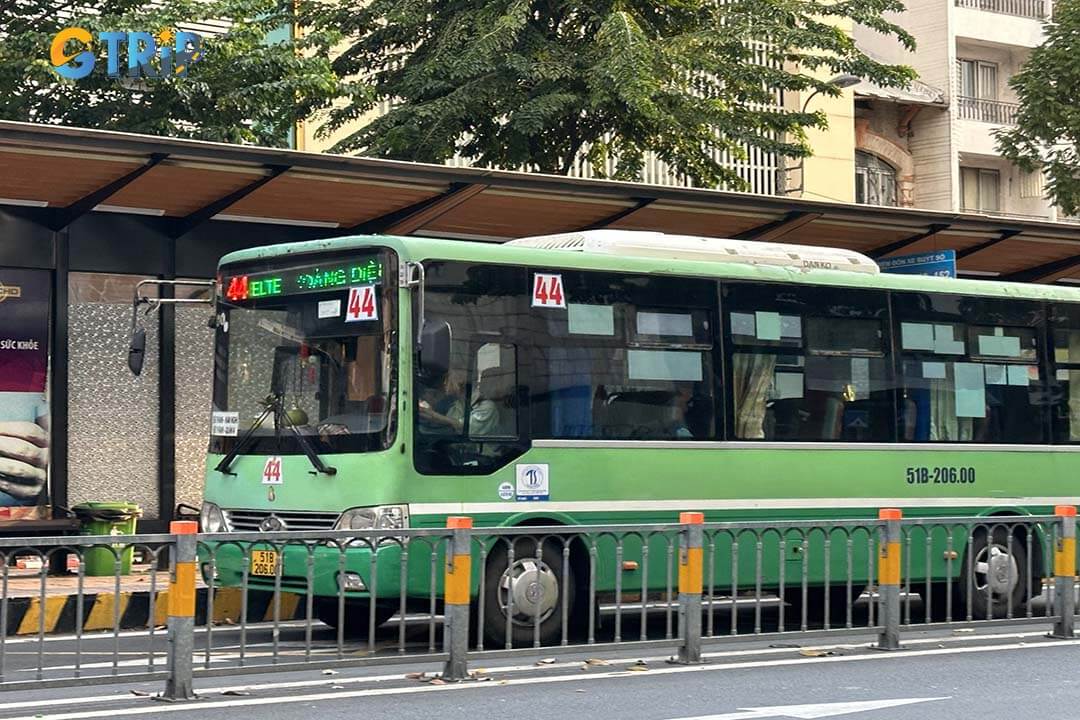
Ho Chi Minh City's affordable bus system offers convenient routes near Saigon Station, connecting key locations like the airport and tourist areas
By taking a taxi
Taxis are widely available across the city and offer a comfortable, direct way to reach the train station, especially if you're carrying luggage or traveling in a group. Reliable taxi companies include Vinasun Taxi and Mai Linh Taxi.
The fare from Tan Son Nhat Airport to Saigon Station takes about 20-30 minutes, depending on traffic. It's important to always use metered taxis and avoid unofficial taxis at airports or tourist areas to prevent scams. You can also ask your hotel for assistance in booking a taxi.
By using ride-hailing apps (Grab, Be)
For more control over fare and pickup location, ride-hailing apps are a smart and popular alternative. These apps are widely used by locals and travelers alike and support both cash and card payments. Grab offers car, motorbike (GrabBike), and taxi bookings, allowing you to see the fare in advance. Be is another rising Vietnamese app known for frequent promotions and reasonable pricing. The advantages of using these apps include transparent pricing, in-app navigation, and estimated arrival times. It's a great option for solo travelers or those avoiding communication issues. To use these apps effectively, consider getting a Vietnamese SIM/eSIM card or a pocket wifi.
Tips for first-time travelers
When traveling to Saigon Station, it's essential to allow extra time due to Ho Chi Minh City's unpredictable traffic. You should leave early, especially during rush hours (7:00-9:00 AM and 4:30-6:30 PM). Prepare offline maps using apps like Google Maps or Maps.me to help navigate after getting off the bus. Save the station’s address in both Vietnamese and English to show drivers: Ga Sai Gon - 01 Nguyen Thong, Phuong 9, Quan 3. This will ensure a smooth journey to the station.
In addition, if you want to have a safer and more convenient travel experience in Saigon for the first time, you can book Ho Chi Minh City tours from travel agencies because they will support you with scheduling, transportation, and places to eat so you will be less confused during your first trip.
Attractions near Saigon Station
Saigon Station is a key transit point and gateway to Ho Chi Minh City's cultural and historical sites. The area surrounding Saigon Station offers visitors a rich blend of experiences, from serene Buddhist temples and unique museums to lively amusement parks. These nearby sites offer a glimpse into Saigon’s rich heritage and vibrant daily life, perfect for travelers seeking a quick, immersive cultural experience.
Museum of Traditional Vietnamese Medicine
The Museum of Traditional Vietnamese Medicine is a unique cultural attraction located at 41 Hoang Du Khuong, Ward 12, District 10, near Sai Gon Station in Ho Chi Minh City. Established in 2007, it houses over 3,000 artifacts spanning from the Stone Age to modern times, showcasing the rich heritage of Vietnamese herbal medicine. The museum is designed in traditional wooden architecture, creating an authentic atmosphere that contrasts with the bustling city outside. Explore 18 rooms of ancient tools, herbal displays, and stories of famed healers like Tue Tinh and Le Huu Trac. Try hands-on activities like making remedies from 81 herbs, and visit the altar honoring traditional medicine pioneers.
Phap Hoa Pagoda
Phap Hoa Pagoda is a serene spiritual sanctuary and a must-visit attraction near Saigon Station, offering a peaceful retreat with traditional Vietnamese architecture, including carved wooden doors, vibrant paintings, and tranquil gardens with serene ponds. The temple grounds feature stunning Buddha statues and other deities, creating an atmosphere of calm ideal for reflection and meditation. Visitors can experience local Buddhist rituals and ceremonies, often held in the early morning or late afternoon when soft natural light enhances the temple’s beauty. A special highlight is the Phat Dan (Buddha’s birthday) celebration on the 15th of April (lunar calendar), when the pagoda is illuminated with lanterns and visitors can join the lantern release ceremony for a unique cultural experience.

Phap Hoa Pagoda, located near Saigon Station in District 3, offers a serene retreat with traditional Vietnamese architecture, tranquil gardens, and Buddhist rituals
Le Thi Rieng Park
Le Thi Rieng Park, also known as Cong Vien Tho Trang, is a vibrant urban amusement space featuring roller coasters, carousels, and rides for all ages, making it a favorite spot for families and kids. The park also offers beautifully landscaped gardens, open spaces for relaxation, and a variety of dining options serving both local Vietnamese and international cuisine. Easily accessible from Saigon Station by foot or a short ride, visiting this park alongside nearby attractions allows you to experience the dynamic energy of Ho Chi Minh City while appreciating the blend of modern entertainment and the city’s historical roots.
Travel tips when you visit Saigon Station
Traveling by train from Saigon Station can be a smooth and enjoyable experience with the right preparation. If you are the first-time visitor or a seasoned traveler, these practical tips will help you stay safe, comfortable, and budget-conscious throughout your journey.
- Stay alert and protect your belongings - Use secure or anti-theft bags and avoid distractions in crowded areas to prevent petty theft.
- Prepare travel documentation - Passengers needs to prepare a passport or national ID card for ticket verification. Beside, students or seniors if have valid student ID or senior citizen ID can have some discounts.
- Arrive early during peak hours - Saigon Station can get crowded, so arrive at least 30-45 minutes early to locate your platform and avoid stress.
- Wear breathable clothing - Lightweight, moisture-wicking clothes are ideal for Vietnam’s humid climate, especially for long journeys.
- Pack a light jacket or shawl - Trains can get cold at night, so bring an extra layer for warmth and comfort.
- Bring a travel pillow and eye mask - These small items help you rest better on overnight or long-distance train rides.
- Use slip-on shoes - Easy-to-remove footwear is convenient for relaxing during the trip and moving through train aisles.
- Keep electronics and power banks handy - Have your devices, chargers, and a fully charged power bank in your carry-on for accessibility.
- Bring snacks and water - Dining services may be limited, so pack non-perishable food and bottled water for the journey.
- Should book tickets in advance - Avoid price surges and secure your seat by purchasing through official railway websites or ticket counters early.
- Stay nearby to save on transit - Choose accommodations within walking distance of the station to reduce transportation costs.
- Buy from local vendors - Save money by purchasing snacks or meals from vendors outside the station rather than pricier in-station kiosks.
- Travel in groups for discounts - Vietnam Railways offers group fares and round-trip deals that can significantly reduce ticket costs.

Make your train journey from Saigon Station safer, smoother, and more affordable with these practical travel tips
Traveling through Saigon Station offers a gateway to Vietnam’s rich culture and vibrant urban life, making it easy to explore historical sites, local traditions, and nearby attractions. As a central transit hub, the station connects travelers to countless destinations across southern and central Vietnam, turning every journey into an enriching experience. Start your adventure in Ho Chi Minh City by joining a tour with GTrip - Vietnam Travel Agency, discovering bustling markets, hidden alleys, and iconic landmarks, all beginning right at Saigon Station.

